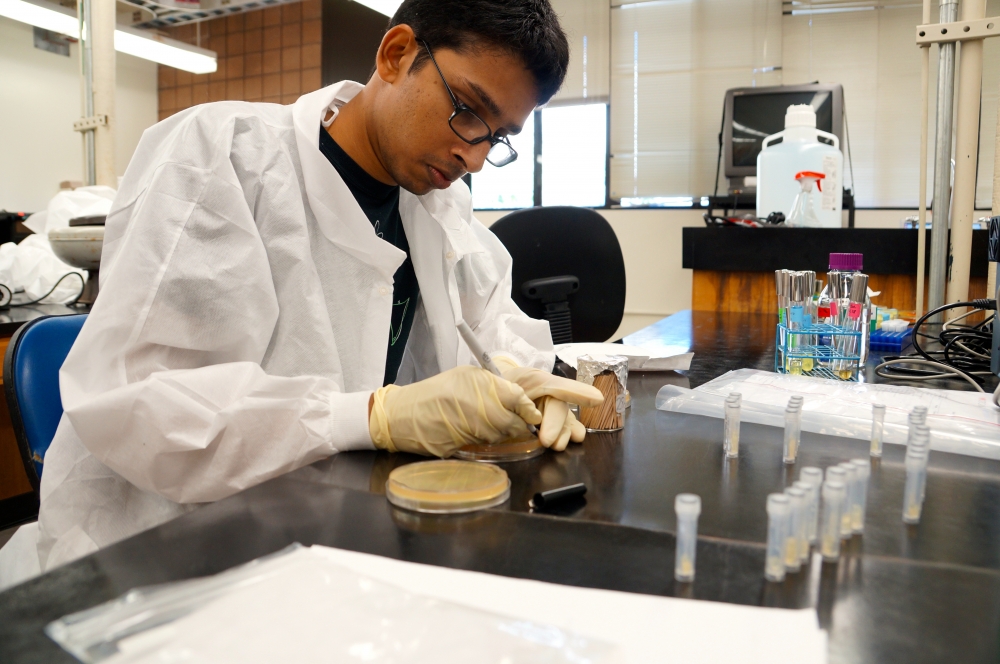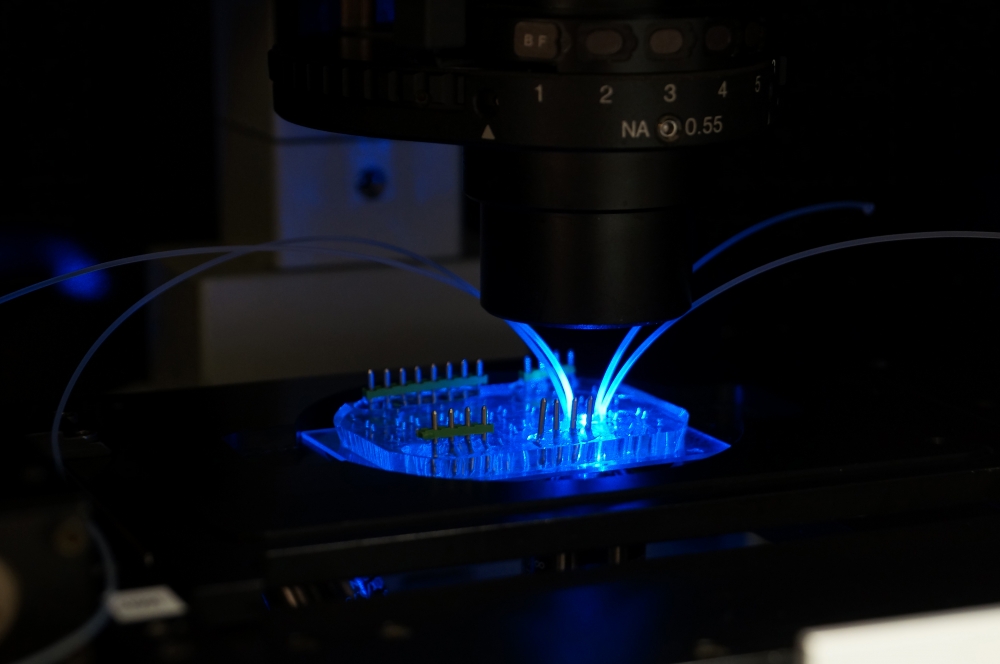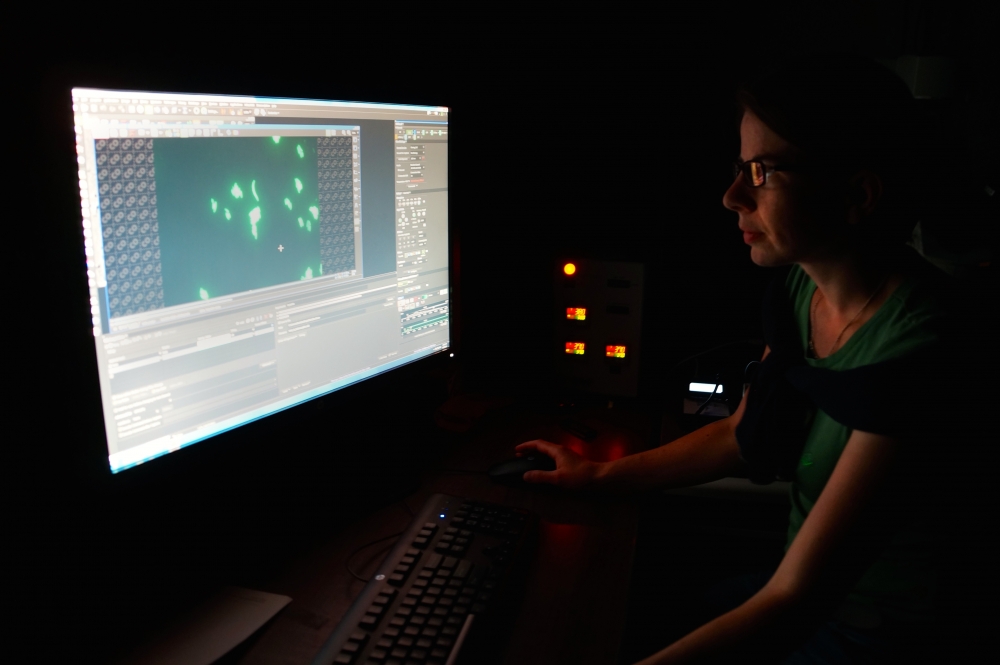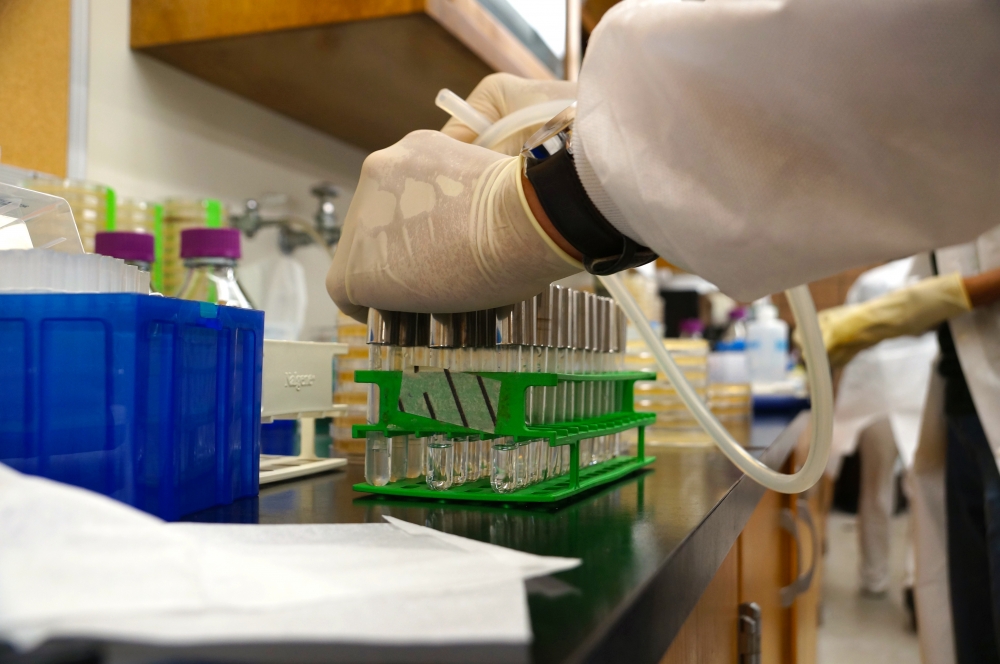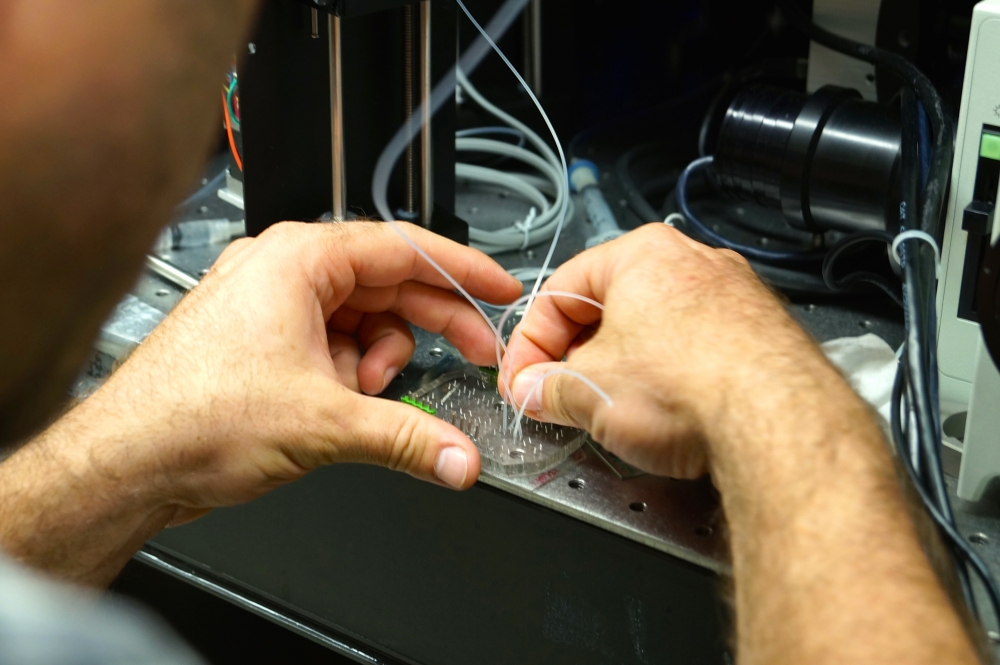Survival and Evolution
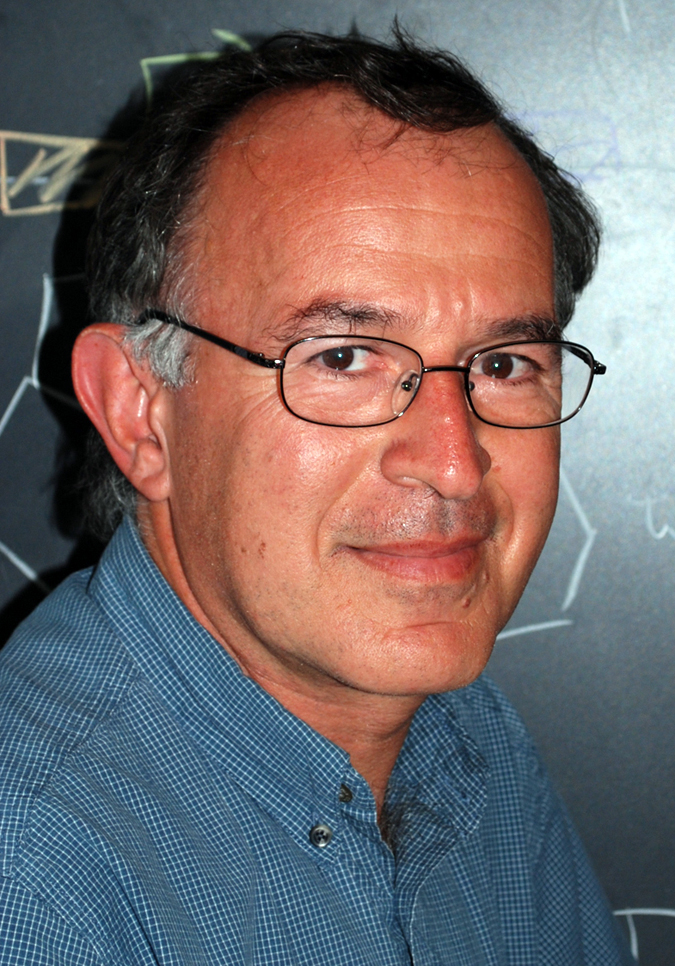
Microbes are clever little fellows, exhibiting a wide range of adaptive behaviors, not the least of which is to make themselves resistant to antibiotics.
This was the subject of the five-week 2014 Advanced School of Quantitative Biology (Q Bio) course, Microbial Strategies for Survival and Evolution, that took place at UC Santa Barbara concurrently with the Kavli Institute for Theoretical Physics (KITP) program on the evolution of drug resistance. Q Bio gave an international group of graduate students, postdoctoral scholars and professors the opportunity to conduct hands-on research to study the adaptive behavior of bacteria and yeast in the laboratory.
“Unlike usual teaching with a syllabus, this course is designed as an active process,” said Boris Shraiman, the Susan F. Gurley Professor of Theoretical Physics and Biology, a permanent member of KITP and one of the directors of Q Bio School. “Students have an opportunity to learn, but they have to be active and engage; there’s no sitting back and listening. This group of participants was very self-motivated and took full advantage of the experts around them.”
Shraiman noted that the key to the Q – the quantitative – emphasis of the course comes from the interdisciplinary mix of biology and physics. In addition to classical methods of genetic and phenotypic analysis, students were taught how to use state-of-the-art tools from fluorescent microscopy for live imaging of phenotypic diversity at a single cell level to microfluidics and single-cell sequencing.
“We wanted the students to have some interesting biological material that would stimulate questions and enable them to use a range of different technologies to extract data, to explore that data and tell us something about the biology of the organisms that we are working with,” said course co-director Paul Rainey, a professor of evolutionary genetics at Massey University’s New Zealand Institute for Advanced Study in Auckland.
While interdisciplinary programs that bring physicists together with biologists happen often at KITP, this summer’s combination of a KITP program with the Q Bio course takes interaction between theoretical physics and experimental biology directly into the lab. In cooperation with UCSB’s Department of Ecology, Evolution and Marine Biology and Department of Molecular, Cellular and Developmental Biology, the Q Bio school set up a research laboratory providing cutting-edge tools for exploration. Additional support was provided by the Gordon and Betty Moore Foundation, the Burroughs Wellcome Fund and the Nikon, Zeiss and Leica microscopy companies.
“We give participants the opportunity to play, to try things out,” Shraiman said. “But there is a lot of expertise so they’re not playing in the dark. They can ask questions and we provide the tools to find answers.”
Lloyd Ung, a Ph.D. candidate working in David Weitz’s Experimental Soft Condensed Matter Group at Harvard University, built a laser fluorescence droplet-sorting instrument and set up the course workflow for fabricating droplet microfluidic devices. “With this device you can study how a bacterium grows without having to look through a whole bunch of other cells,” Ung said. “Growth rate is important when you’re studying antibiotic resistance.”
Microbiologist Christopher Field, a postdoctoral scholar at the University of Basel in Switzerland, appreciated the interdisciplinary approach of the course. “Even though I do experiments in my day-to-day job, here I got to play around with these microfluidic devices, which I wouldn’t have gotten a chance to do otherwise,” he said.
“It’s like jamming but it’s science,” Field added. “Even if you’re a day-to-day musician, you meet up with some friends and do some interesting stuff. This course is a bit like that. You get to explore things you wouldn’t normally have time for because of job pressures and such.”
Jamie Blundell, a postdoctoral scholar at Stanford University, examined how mutant bacteria grow in large colonies. “Bacteria on the outside of the structure grow differently than those on the inside,” he said. “The dynamics of how mutations arise and spread when there is spatial structure could be very different than if no spatial structure exists.”
During the course, biochemist Julia Kamenz, a graduate student in the Hauf Lab at Virginia Tech University, isolated a mutant strain of bacteria that grows two and a half times slower than regular bacteria. Working with instructor Nathalie Questembert-Balaban, Kamenz used a screening system based on a document scanner, but instead of scanning documents, it scans plates with petri dishes.
“We were interested in dormancy,” explained Balaban, a professor at the Racah Institute of Physics at the Hebrew University of Jerusalem. “Most of the time we look at bacteria when they grow really, really fast, but sometimes they grow very slowly or not at all, and this is what we were trying to quantify.”
Two graduate students from the Arnold Sommerfeld Center for Theoretical Physics at Ludwig Maximilian of Munich came to Q Bio School to discover firsthand the intricacies of experimentation. “The questions you ask are different and so is the motivation,” said Ph.D. candidate Johannes Knebel. “The time scales for experiments are also different, and one has to pay much more attention to preparing a study. I just realized that during this course. Experimentalists always tell you that, but it’s really different when you feel it.”
He and his colleague, Markus Weber, worked with a strain of Pseudomonas bacteria that switches between two forms. Together they studied the basis of switching by tracking how the ratio between the two types evolved over time. “We wanted to understand something about the microscopic details of the bacteria by looking at the whole population,” he explained.
Weber proposed a simple new approach. Because one of the types of bacteria was fluorescent, Weber and Knebel were able to detect when the bacteria switched from one state to the other using a sophisticated flow cytometer that tracked the signal of green fluorescence over time. This allowed the researchers to model the dynamics using approaches they borrowed from their background in statistical physics.
“We used a flow cytometer, which is high-tech, but besides that the experiment was pretty low-tech actually,” Weber said. Both he and Knebel said they have a new appreciation for the interplay between theory and experimentation, which, after all, was the ultimate goal of the course.
